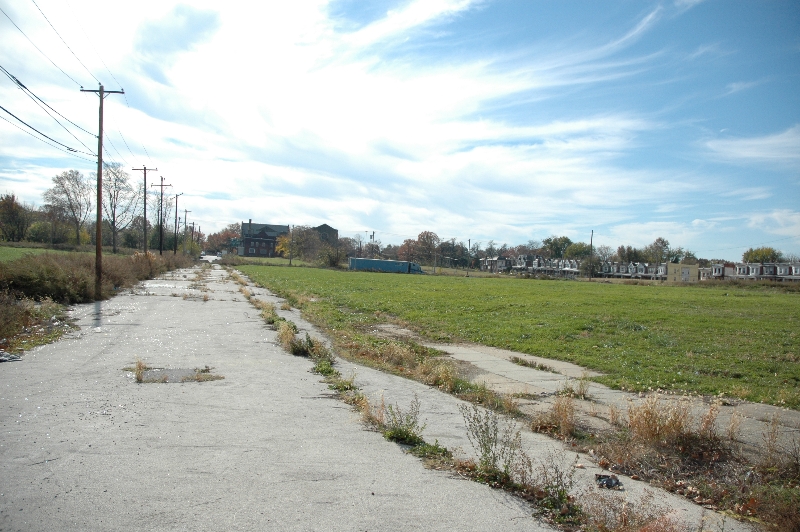Praxis Dialogues: Public agency in service of the public good

On December 1, PennPraxis and PlanPhilly will kick off Praxis Dialogues, the first in a series of public conversations about the notion of “the public good” in design practice, and how it informs and affects the design and use of spaces in the public realm. We’ve shared commentaries from the panelists: PennPraxis’ Executive Director Randy Mason, the Community Design Collaborative’s Beth Miller, and William Penn Foundation Program Officer David Gould, and Interface Studio’s Scott Page. Today, Brian Abernathy offers a final installment from his perspective in government. Abernathy is the outgoing Executive Director of the Philadelphia Redevelopment Authority and will serve as Deputy Managing Director in the Kenney Administration.
When we look across Philadelphia’s neighborhoods, we sometimes come across deep scars in our built landscape – scars that speak to our history, our priorities, and the unintended consequences of government intervention. In most cases, these wounds were not intentional nor the result of purposeful neglect. Often, the City has made noble efforts to correct intransigent problems. Despite the City’s work, however, and sometimes because of it, our attempts at the public good have done more harm than good.
These issues go beyond quality urban design, understanding of the market, or project budgets. In most cases, there are reasons projects have not been come to fruition. Without focus, however, these initial injuries fester and have profound effects, including disinvestment and, perhaps most importantly, a hopelessness that can rot a neighborhood’s soul.
Thirty years ago, a gas explosion in the Logan neighborhood revealed a problem to government officials that many residents already knew – the ground was literally sinking beneath them. Over the subsequent years, elected officials, local, state and federal governments, and residents struggled to manage through the relocation of 900 households and the demolition of hundreds of homes on nearly 40 acres of land in the neighborhood.
Those activities were right and necessary for the conditions at the time. Unfortunately, in the past three decades, Logan has become a refuge for dumping and other illegal activities. Good people have struggled to maintain the fabric of their community and what was initially done for the public good has become a blight that diminishes home values, economic development and public safety.
Today, we sit at the brink of a significant development for Logan Triangle. That development, led by The Goldenberg Group in partnership with the Redevelopment Authority, hopes to bring jobs to Logan, recreational facilities, open space, and retail amenities. We also hope to use a portion of the revenue generated by the project to reinvest in the surrounding neighborhood. These hopes, however, have generated a healthy debate about the “public good,” community development and government’s role in neighborhoods.
At the outset, we must admit that the Logan Triangle is a difficult site to develop. The conditions that caused the neighborhood to sink – unstable ash fill and an encapsulated creek – still exist. Construction will require significant reinforcement and those methods are expensive. Additionally, while the location on Roosevelt Boulevard is strong, the surrounding market is not. In large part because of the Triangle’s blight, property values have been suppressed and businesses have often struggled. A successful project will require significant public subsidy.
A valid question is “What do we get for that subsidy? Is it worth it?”
In a traditional sense, we often settle for jobs and tax revenue as the public pay-off. If that’s our only measuring stick, then, no, the Logan Triangle project and the subsidy required don’t meet a test for public good.
To make an adequate case for our investment, we must look at Logan’s history and our responsibility to the neighborhood. The public good comes in the services that can be offered at the site: potential retail opportunities, recreational possibilities and a chance for quality open space. Additionally, we must reinvest in the neighborhood by stabilizing the housing stock, tackling vacant lots and providing support to small businesses. These priorities were set by a neighborhood planning process that identified residents’ biggest concerns and most pressing needs.
That work with the community, in and of itself, is an important part of what we should define as the public good. Many of the challenges that Logan face were inflicted by outside forces. In order to rebuild and in order to heal, neighbors must be part of the process, part of the project and we, as government and as developers, must recognize that role.
If done well, this redevelopment project could have transformational impact on a neighborhood that was transformed by tragedy, time, and unforeseen events.
As we discuss the public good, going beyond our traditional, narrow perspectives of jobs and tax revenue, thinking about neighborhood and community impact and recognizing and addressing our histories should all be at the forefront of our minds.
After all, Logan Triangle is just one example: Pine and Osage, the site of the MOVE bombing; Eastwick, affected by flooding and a fifty-plus year Urban Renewal Plan; other sinking home sites that dot the City; abandoned schools, institutions and factories. As we dive deeper into the 21st Century, it is time to turn these projects from great community liabilities to examples of the public good that not only transforms the individual site, but supports the neighborhood they’ve affected for so long.
Praxis Dialogues will begin its series on the public good with a conversation on December 1, from 6:30-8pm at the Kleinman Center for Energy Policy, Fine Arts Library, PennDesign, 220 S. 34th St. Free, open to the public.
WHYY is your source for fact-based, in-depth journalism and information. As a nonprofit organization, we rely on financial support from readers like you. Please give today.






